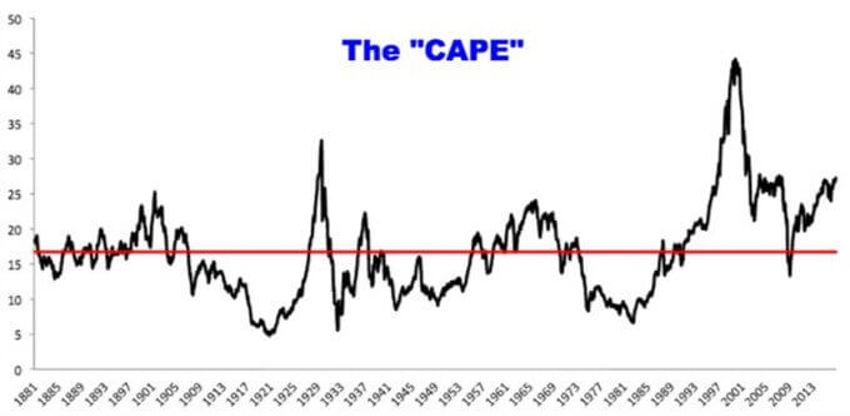What’s Behind the Market’s CAPE?
In yet another annual mish-mash of the elements which will surely send us all spiralling downward, there are a lot of people asking about the CAPE:

The CAPE is the cyclically adjusted price-to-earnings ratio used as a valuation measure for the S&P 500 equity market. It is defined as price divided by the average of ten years of earnings (moving average), adjusted for inflation.
The CAPE chart above gets trotted out at the start of each year regarding over-valuation in the market.
The CAPE = Cyclically Adjusted Price to Earnings ratio - sort of like a 10-year rolling P/E.
The kicker her is that since 1990, the S&P 500 has been trading above the average CAPE ratio during 307 out of 324 months. For all you really smart quants out there that’s 95% of the time.
So, if you had exited US equities when the CAPE ratio was overvalued, you would have missed gains of more than a 1000% over that time.
Seen another way, had you ONLY invested when the CAPE was 25% overvalued – i.e. you purposely waited for stocks to be “very expensive” – your total returns since 1990 would have been 650%.
Fact: You are ill-advised to use valuation as a timing mechanism.
You may want to keep in mind as you look at the lines on the CAPE chart above that the massive setbacks from 2009, which are obviously biasing the ratio higher in current form, will be rolling off in 2020.
Professor Jeremy Siegel has rightfully pointed out, "We’re comparing apples to oranges to some extent, given the fact that the accounting treatment of earnings and losses has changed from one era to the next, which changes the composition of as-reported numbers."
We all have to recognise that, in the context of your life-long goals combined with your overall asset and investment plan, there will always be valuation concerns for one asset class or another.
The Bottom Line
Let's instead remain focused on the larger picture, the Barbell economy – as the Baby Boomers hand over the economic baton to the Millennials - and America’s fantastic demographics (world-leading by developed-economy standards).
The pace of growth should continue to surprise as we move forward into 2017 and beyond, but only for the patient investor.
Don't be afraid of setbacks. In fact, we should not only expect they will continue to be a part of the landscape, but we should hope for them as well.
And long-term investors might further want to be prepared to take advantage of the often emotional, short-term reactions as the upcoming Q4 earnings season begins.
